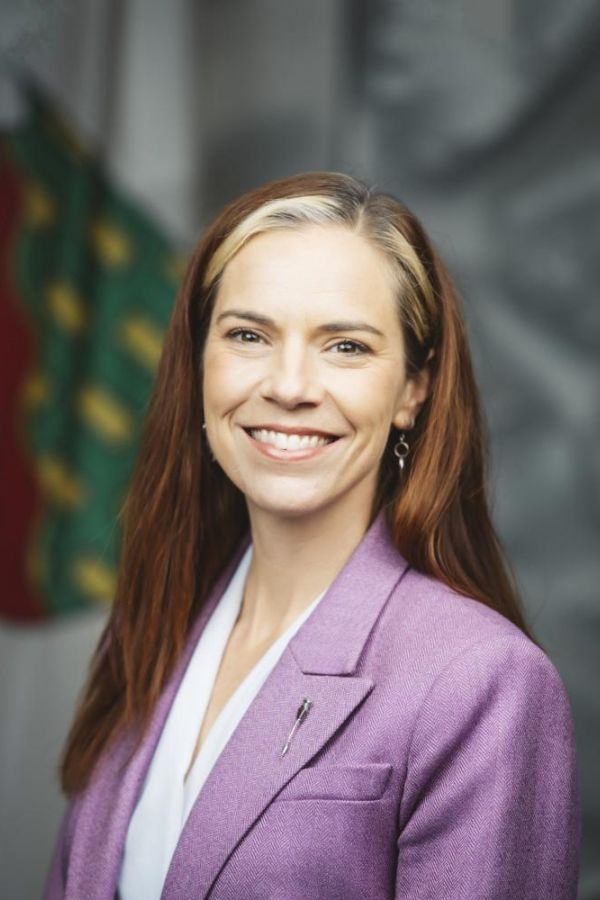
Thank you very much, Madam Chair. My first question is in regard to the district operation budget reflected on page 373. I've noticed that the North Slave, South Slave, Nahendeh districts all have increased budgets, whereas the Beaufort-Delta district has actually a decreased budget. Is that reflective of the need of each region? Thank you.

Thank you, Member. Minister.
Thank you, Madam Chair. This would have to do with the amortization within this budget. I'm going to have Mr. Martin elaborate on that and answer the question. Thank you, Madam Chair.

Thank you, Minister. Mr. Martin.
Thank you, Madam Chair. Yes. As the Minister alluded to, the Housing Corporation this past couple of years, but this past year reflected in this budget, went through a review of our amortization of all of our assets. We worked with the Office of the Auditor General in updating our schedules and, through those reviews, we made some adjustments in terms of how we amortize our assets. As a result of those changes, we actually slowed the amortization annual adjustment down, so as a result of that, the Beaufort-Delta having 35 percent of our assets, that adjustment was most reflective in that district. It resulted in a decrease in 2021 overall spending, budget spending plan for 2020-2021. Thank you, Madam Chair.

Thank you, Mr. Martin. Member for Kam Lake.

Thank you very much. I'm wondering, if the amortization had impacted our budget by decreasing the Beaufort-Delta, why did it drive up the budget values for the other three regions, where the Sahtu basically stayed pretty consistent? Thank you.

Thank you, Member. Minister responsible for the NWT Housing Corporation.
Thank you, Madam Chair. I will just pass the question on over to Mr. Carpenter. Thank you, Madam Chair.

Mr. Carpenter.
Thank you, Madam Chair. I want to not get too caught up in the amortization. To be honest, I don't like that financial term in terms of how it affects this. It's really just an accounting adjustment, at the end of the day. The key point that I want to make on this section is that you see all the other districts increase, and that's because there is a small piece for forced growth. What we did is: we got a little bit of money from Canada through our bilateral. We jumped up all the districts in the budgets, and we put a little bit more money into some initiatives you've seen on the other page, like the emergency repairs, and things like that. All the districts got an increase for this year, but we had that one accounting adjustment that Jim was explaining, that shows it like that. Even though they got budget increases, they didn't lose money. It was just an accounting adjustment that showed there like a loss. Thank you, Madam Chair.

Thank you, Mr. Carpenter. Member for Kam Lake.

Thank you, Madam Chair. The money that the Housing Corporation received from the federal government, how was it distributed throughout the regions? Was it distributed per capita or by population? Was it distributed by need? Was it distributed evenly throughout each region? Thank you.

Thank you, Member. Minister responsible for the NWT Housing Corporation.
Thank you, Madam Chair. The money is distributed evenly. Thank you.

Thank you, Minister. Member for Kam Lake.

Thank you very much, Madam Chair. Is that evenly by population? Evenly just straight up divided between each region regardless of population? Thank you.

Thank you, Member. Minister.
Thank you, Madam Chair. The money is divided equally throughout the Northwest Territories. Thank you, Madam Chair.

Thank you, Minister. Member for Kam Lake.

Thank you, Madam Chair. I'm wondering if the Minister can define "evenly." Is it divided evenly based on the five regions, or is it divided evenly based on need? Is it divided evenly based on population? Thank you.

Thank you, Member. Minister.
Thank you, Madam Chair. The money is divided equally by dollar. Thank you, Madam Chair.

Thank you, Minister. Member for Kam Lake.

Thank you, Madam Chair. No, I was just wondering if it was divided using the number of people in the region or the amount of need in the region, or if it was divided just saying we have five regions and we're going to take this dollar figure and evenly divide it by these five regions, just based on the dollar amount. Thank you.

Thank you, Member for Kam Lake. Minister.
Thank you, Madam Chair. Yes, that's correct.

Can you elaborate?
Okay. You know, we receive the federal money. We receive the budget. We have five regions. The money is divided equally among those regions by dollar. Does that answering your question?

Thank you, Minister. Member for Kam Lake.

Thank you very much. I'll take that that it's divided equally by region, so thank you. My next question is in regard to the programs, development and implementation line. That has gone up substantially, and I'm wondering if the Minister can speak to what Northerners will get for that increase in that dollar line. Thank you.

Thank you, Member. Minister.
Thank you, Madam Chair. I'm going to have Mr. Carpenter elaborate on it. I just can't locate this right away, quickly.

Thank you, Minister. Mr. Carpenter.
Thank you, Madam Chair. If you look on page 374, we have the community housing support initiative. In prior budgets, we used to send that out to each district office, but most of the proponents are coming through us in Yellowknife. We just moved the budget out of that program, development and implementation section for coordination. Thank you, Madam Chair.

Thank you, Mr. Carpenter. Member for Kam Lake.

Thank you very much, Madam Chair. Can the vice-president please expand on the community housing support initiative, then, please? Thank you.

Thank you, Member. Mr. Carpenter.
Thank you, Madam Chair. Just to give a bit of history, over the years, we've been receiving a lot of interest from community groups to pretty much say, "Give us the money, and we'll do our own housing projects better than you can." What we did is: about a year or two ago, we developed this initiative and put some money into it, where it's a very simple policy that, if you have a project that you want to do on your own that benefits community housing, we want to participate in it. The criteria is that any project that benefits housing, whether it's homelessness, there is a community that went around and built ramps, there are communities that got units from us. The only prerequisite is that they have to have some sort of participation in it, in terms of a contribution or a labour component. We're very excited about this program. We've had a lot of exciting projects has been happening with it. We did homeownership projects in some places, as I've said, and we have a lot of interest, again, this year for this project. This is one of those projects that touches on every point of the mandate. Thank you, Madam Chair.

Thank you, Mr. Carpenter. Member for Kam Lake.

Thank you very much, Madam Chair. I was just looking at the activity description on page 372 that says that the program, development and implementation ensures compliance with existing program policies and procedures and also supplies training and capacity required to effectively and efficiently deliver the programs and services. Does the cost of building the ramps and the cost of hiring people to do those types of home accessibility or home renovation projects all come out of this dollar figure here? Thank you.

Thank you, Member for Kam Lake. Minister.
Thank you, Madam Chair. I just wanted to give an example that we have had this initiative successful, in Fort Good Hope, where we have had the K'asho Got'ine approach the Northwest Territories Housing Corporation, and they wanted to start to renovate their own homes. The Housing Corporation went in with them. They submitted a proposal. We have honoured that proposal. We have the agreement, and so the K'asho Got'ine go and they renovate on their own. It's not an application; it's a community initiative that the Housing Corporation is kind of involved with by grant. They supplied the money for the project. Thank you, Madam Chair.

Thank you, Minister. I will move on to Member for Thebacha.

Thank you, Madam Chair. On page 374, securing assistance for emergencies, you have $1.5 million. Could you explain that program, please?

Thank you, Member. Minister.
Thank you, Madam Chair. This program would be for immediate assistance that would be required for, I want to say, home renovation. Not home renovation, but home repair that would be an emergency, that would need to be addressed right away. Right away, at the top of my head, would be is if you had a freeze-up, water and sewer had frozen up; this is the funding that you would be accessing. I will have Mr. Carpenter elaborate on that a little bit more. Thank you, Madam Chair.

Thank you, Minister. Mr. Carpenter.
Thank you, Madam Chair. This is the Housing Corporation's flagship emergency repair program. It has as minimal criteria as we can. We set it up for $10,000 per year. It's one of our heavily subscribed programs. People like it. It addresses things like freeze-ups; furnace issues, commonly; and a lot of seniors use that program. Even though we set up a budget there of $1.56 million, typically, in a winter, we will usually exceed that budget, and we find money within to do that. Thank you, Madam Chair.

Thank you, Mr. Carpenter. Member for Thebacha.





